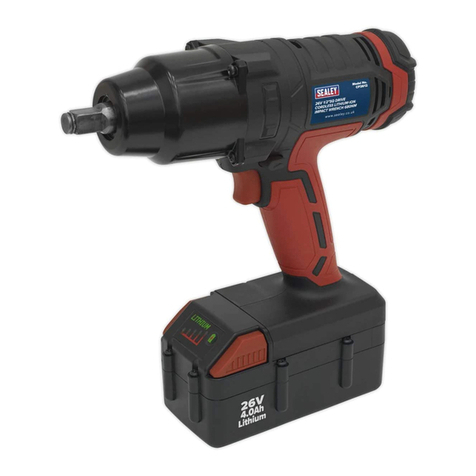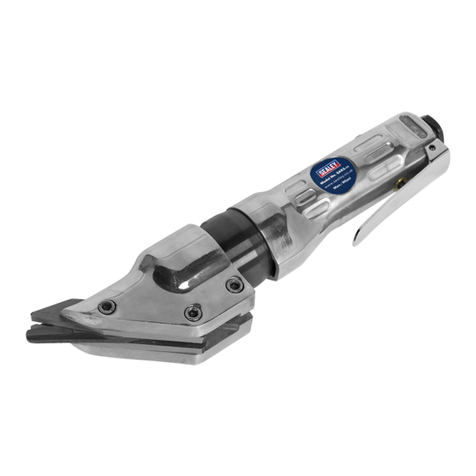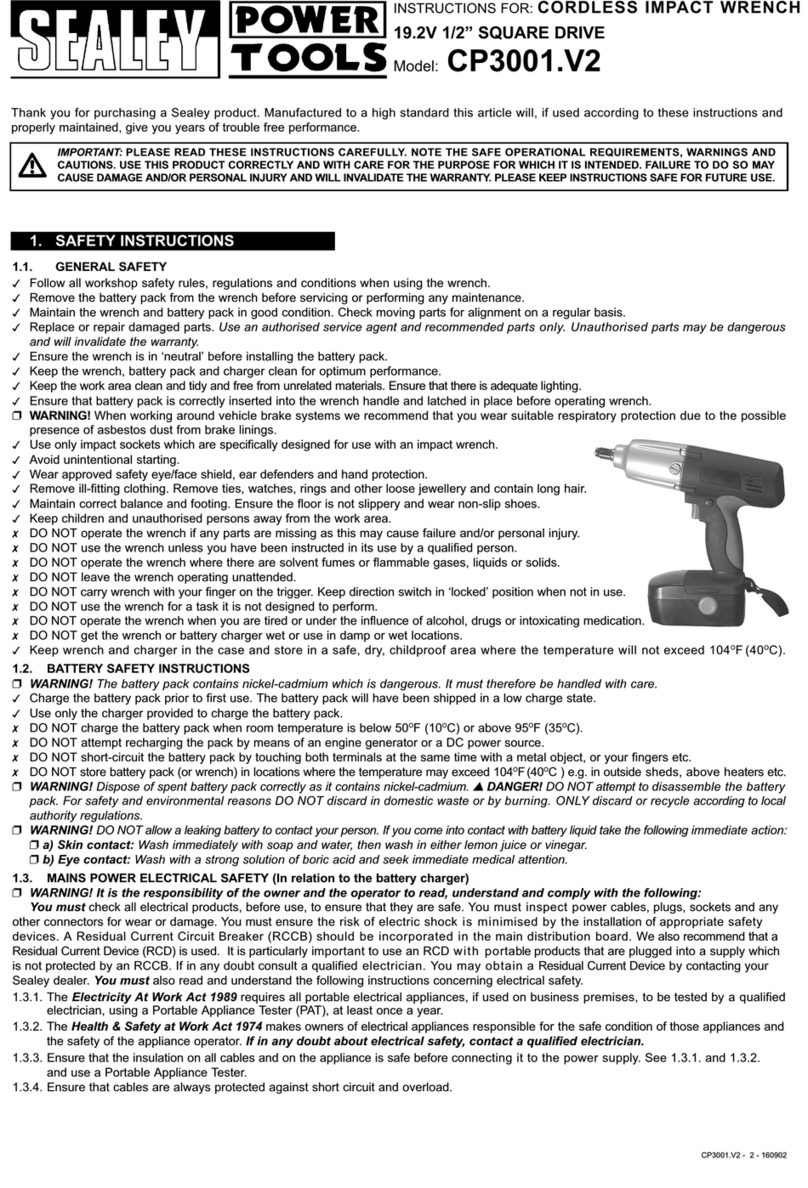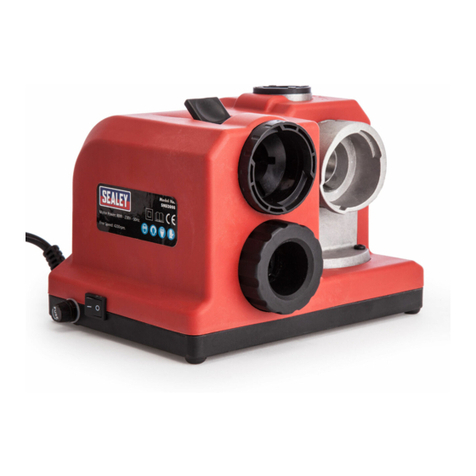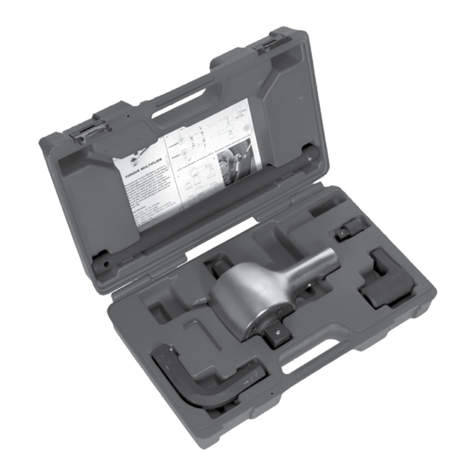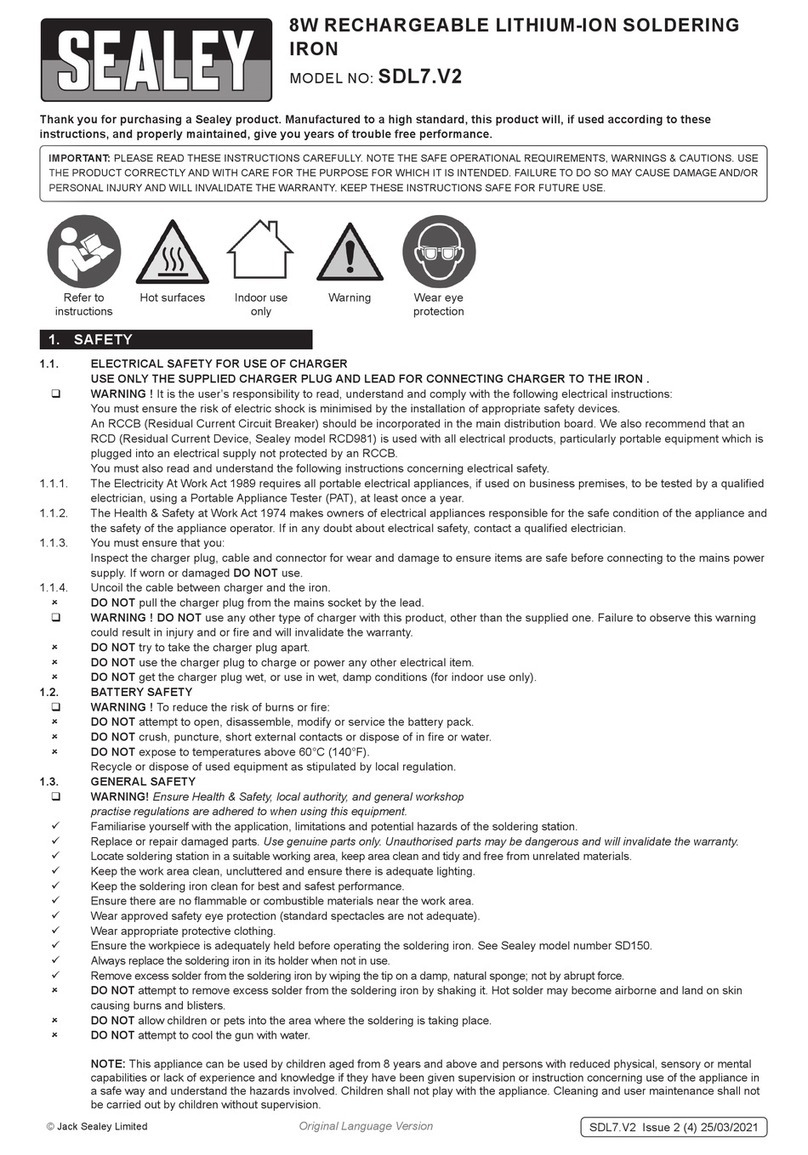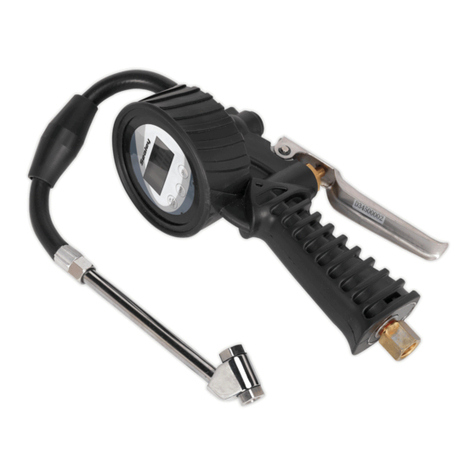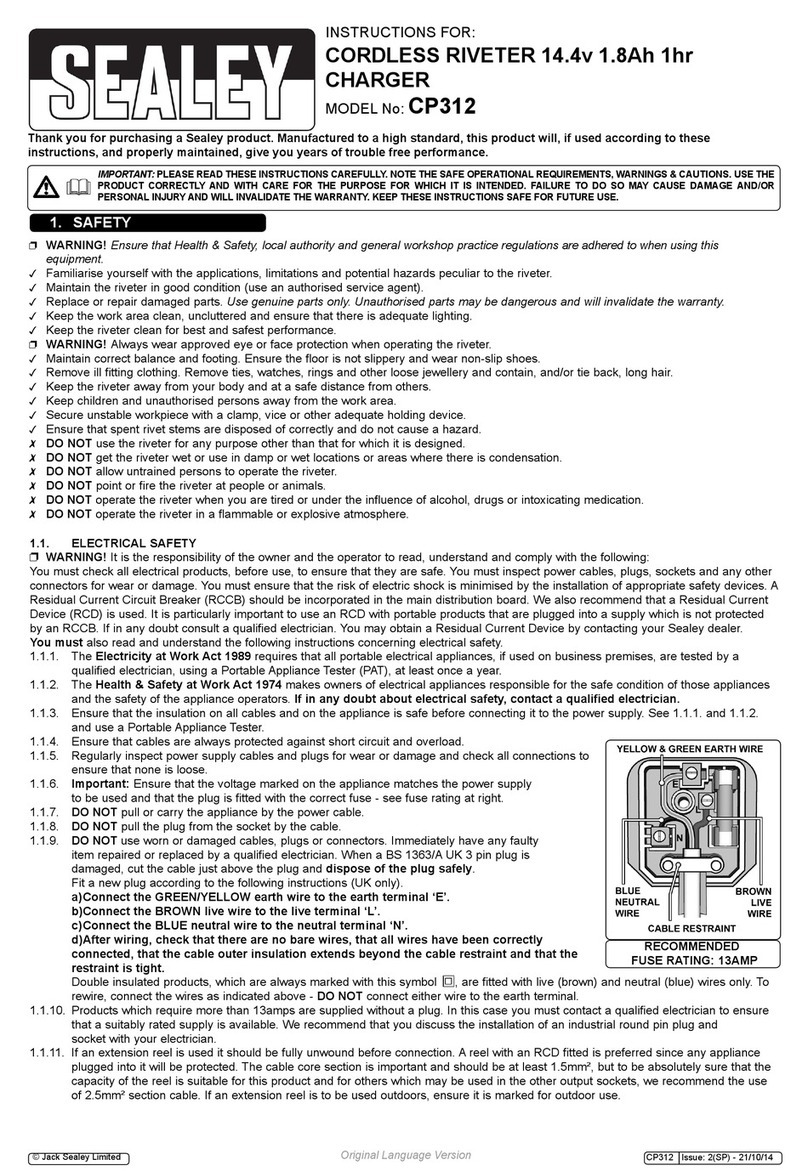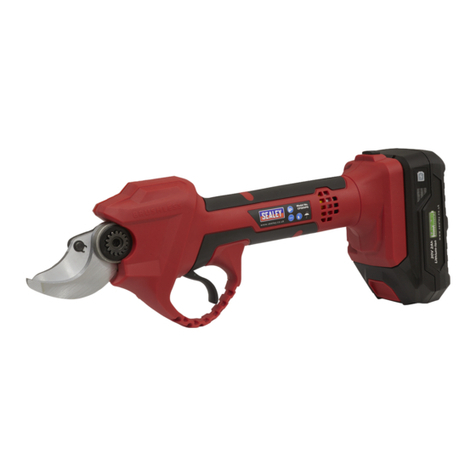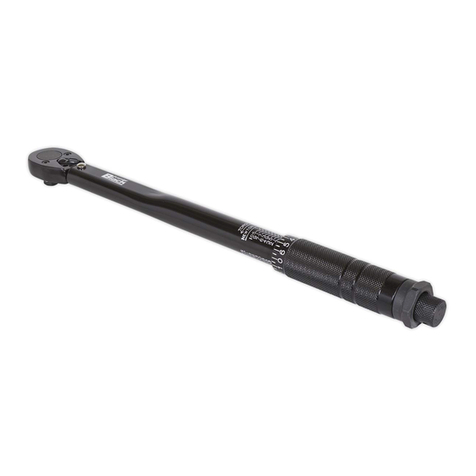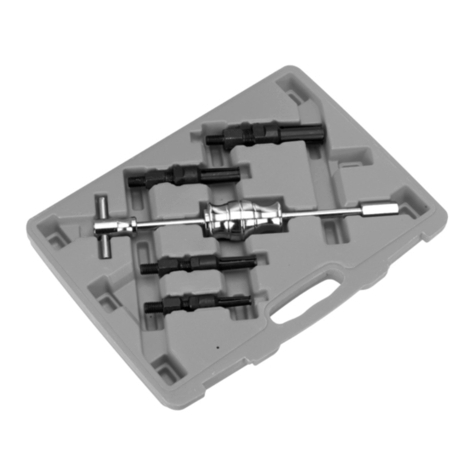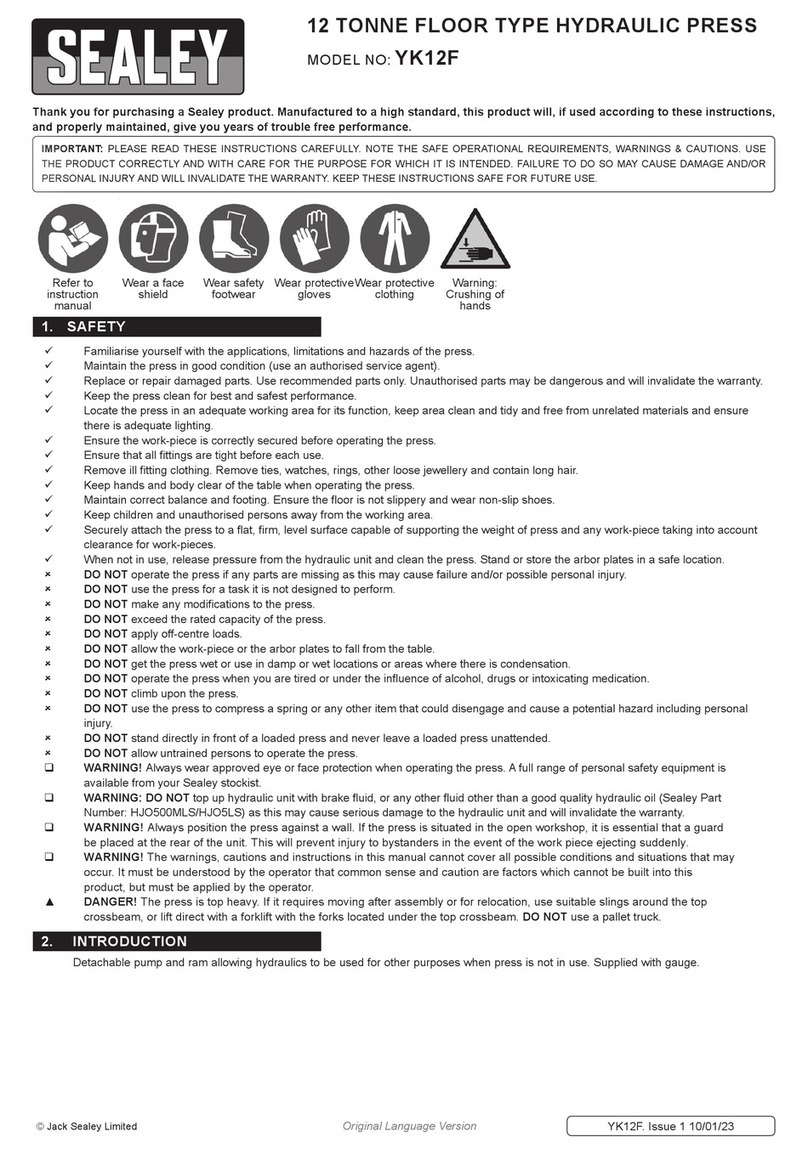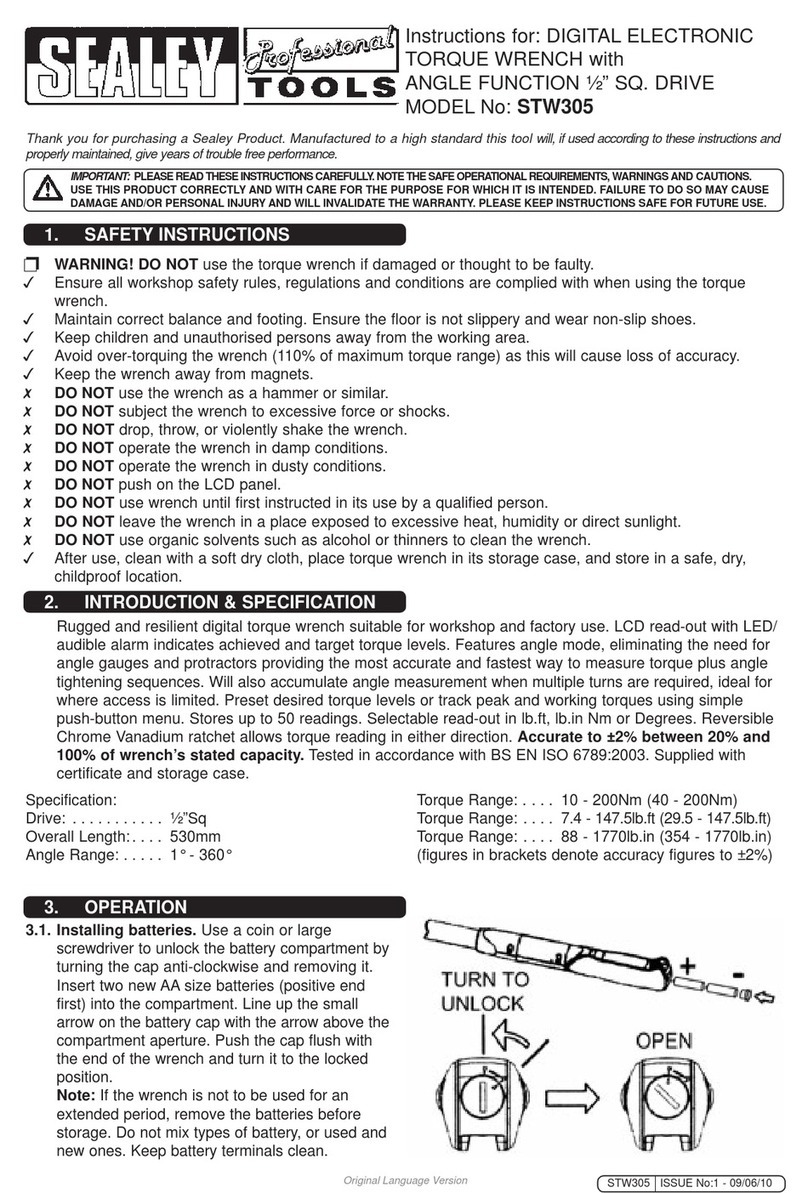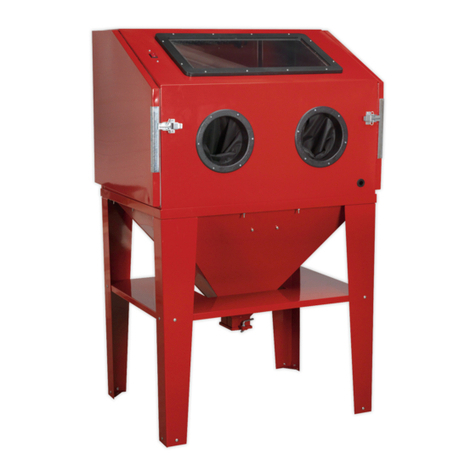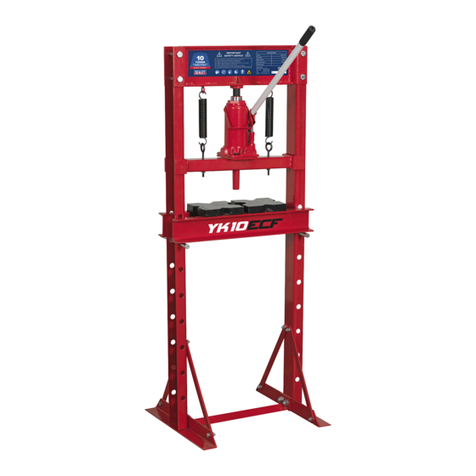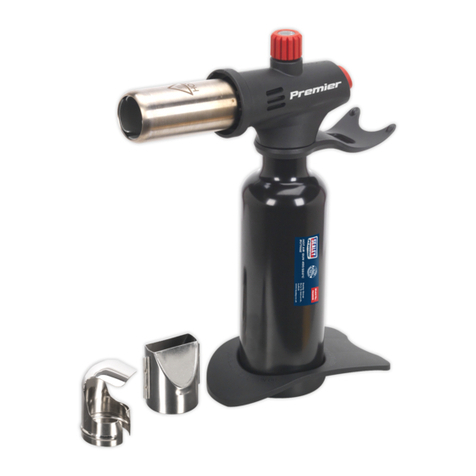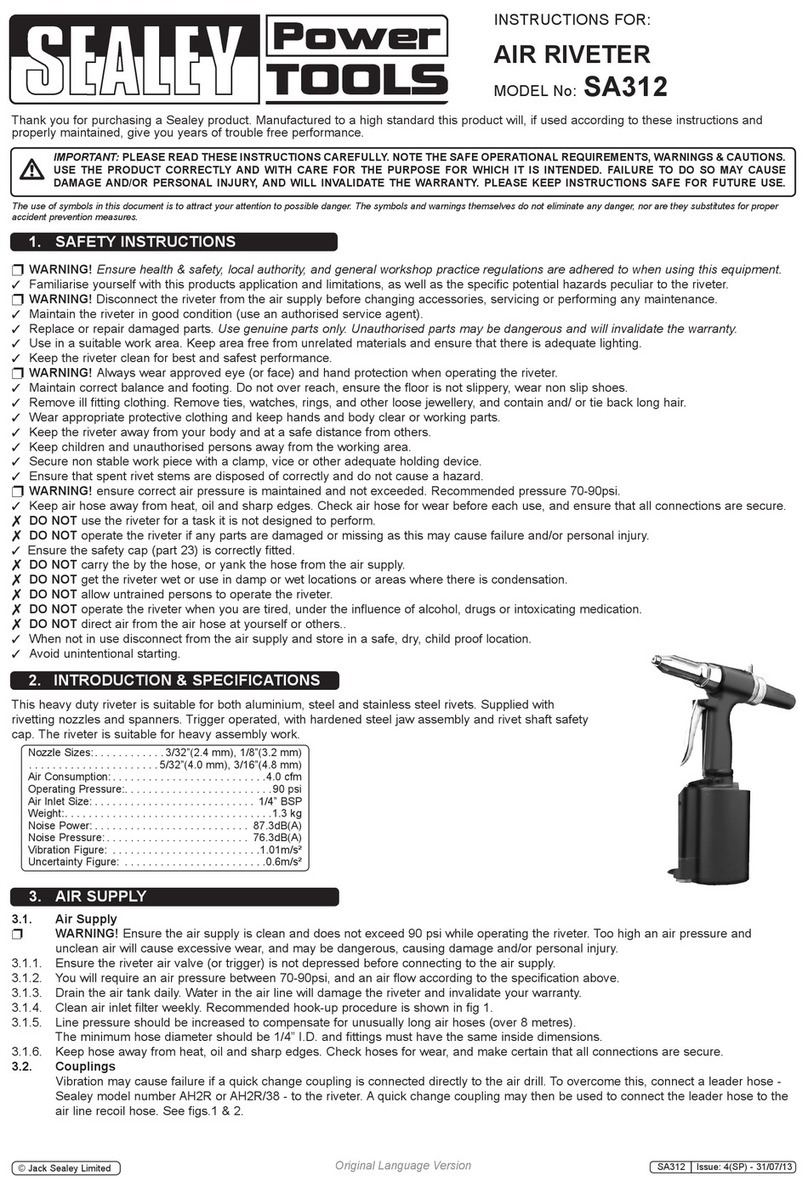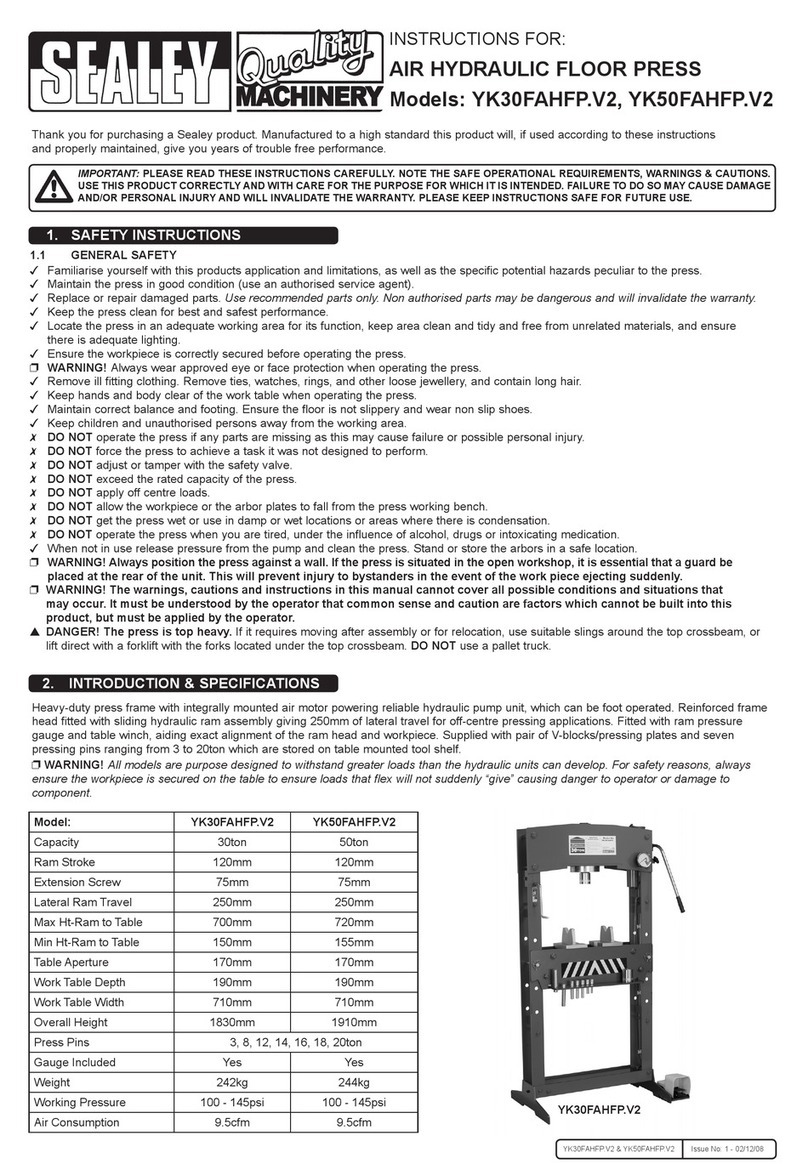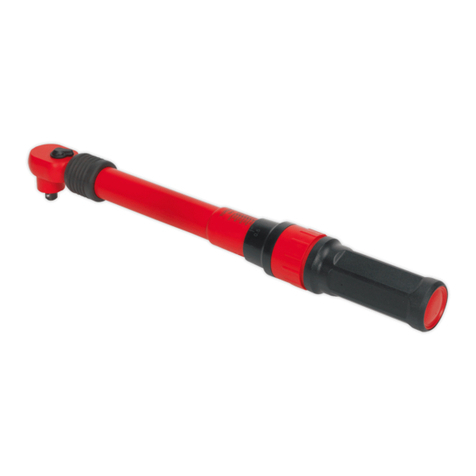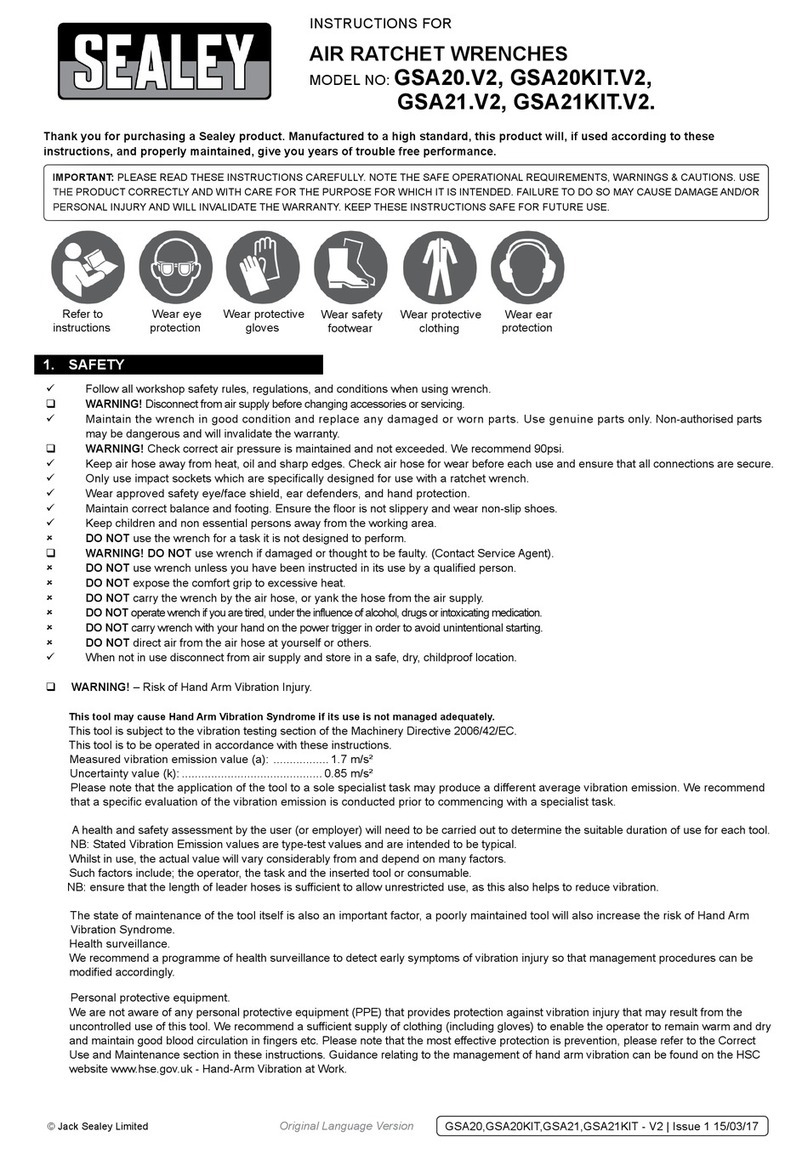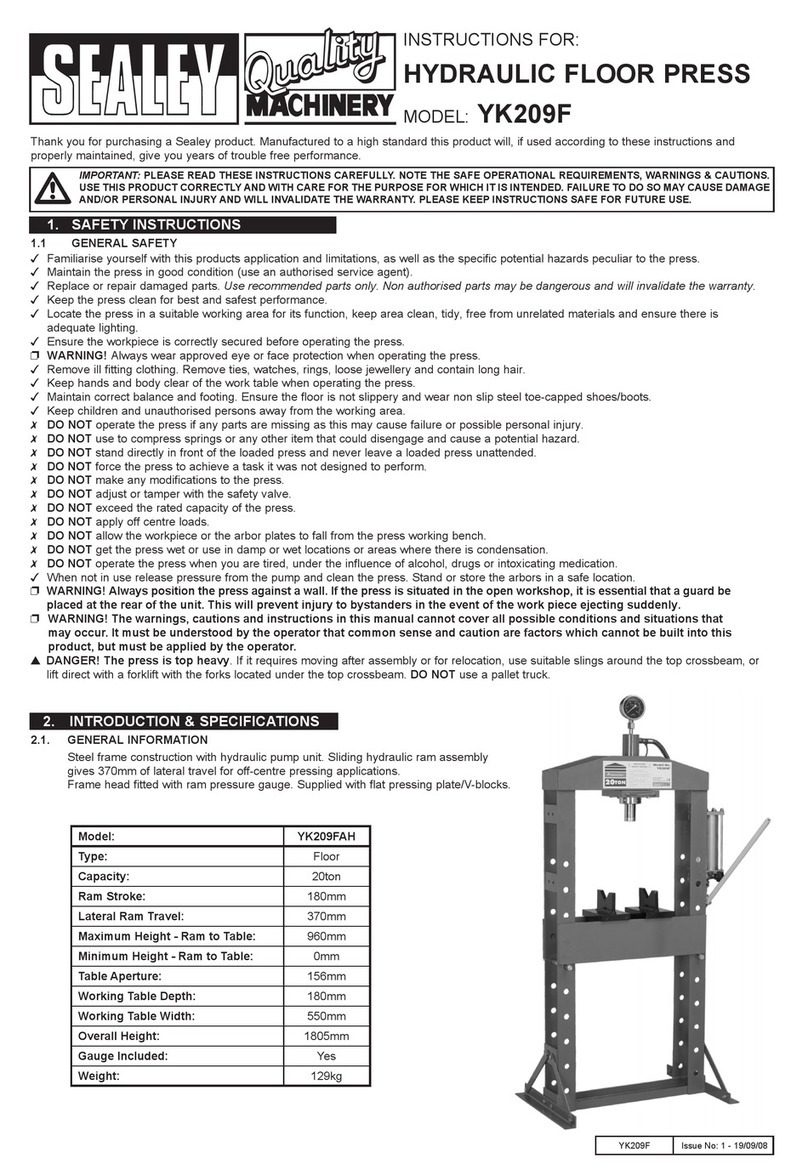
NOTE: It is our policy to continually improve products and as such we reserve the right to alter data, specifications and component parts without prior notice.
IMPORTANT: No liability is accepted for incorrect use of product.
WARRANTY: Guarantee is 12 months from purchase date, proof of which will be required for any claim.
INFORMATION: For a copy of our latest catalogue and promotions call us on 01284 757525 and leave your full name and address, including postcode.
4. GAUGE READINGS
4.1 On a normal cylinder, the gauge needle should travel up the scale on each compression stroke until it
reaches peak value. All cylinders should indicate a pressure that is within the vehicle manufacturer’s
specifications, and the readings should not vary by more than 10% between cylinders.
4.2 If the gauge needle does not travel up the scale or if it remains at the same value for several strokes
and then starts to climb, the fault could be with a valve sticking.
4.3 If the compression reading is considerably higher than the vehicle manufacturer’s specification, the
problem may be carbon build-up in the cylinder head. It can also indicate that either the piston, or the
cylinder head, may have been modified.
4.4 If a reading on two adjacent cylinders is 20psi (or more) lower than the other cylinders, the fault
may be a cracked cylinder head or defective head gasket. Under these conditions, both coolant and oil
may be found in both cylinders.
4.5 If the readings are low, or vary widely between cylinders, pour a teaspoon of SAE 30 oil into each
cylinder and re-test them. If the readings increase considerably, the fault may be a piston ring defect or
worn cylinder bores. If the readings remain about the same, the valves and/or associated components
may be at fault. A holed piston may also cause the same results.
5. POST TEST PROCEDURE
5.1 Clean, re-gap and reinstall the
spark plugs in the same order in
which they were removed, or replace
with new spark plugs.
5.2 Reconnect each HT lead to the spark
plug it was connected to prior to
removal.
5.3 Return the throttle butterfly valves to
the closed position.
IMPORTANT: After test, failure
to return the throttle butterfly
valves to the closed position
before starting the engine can
cause serious damage to the
engine.
5.4 Reconnect the ignition system
wiring disabled in paragraph 3.7.
VSE200.V3 Issue No: 1 - 14/06/12
Parts support is available for this product. To obtain a parts listing and/or diagram,
please log on to www.sealey.co.uk, email sales@sealey.co.uk or phone 01284 757500.
01284 757500
01284 703534
sales@sealey.co.uk
Sole UK Distributor, Sealey Group,
Kempson Way, Suffolk Business Park,
Bury St. Edmunds, Suffolk,
IP32 7AR
www.sealey.co.uk
Web
email
Original Language Version
© Jack Sealey Limited
3.6 Remove the air filter and set the throttle butterfly valves to the wide open position, taking care not to
damage the linkage or throttle components
IMPORTANT: After test, failure to return the throttle butterfly valves to the closed position
before starting the engine can cause serious damage to the engine.
3.7 Disable the ignition system, following the manufacturer’s recommendations in the vehicle service
manual.
3.8 Select the spark plug adaptor required for the vehicle (either 10,12,14 or 18mm). Screw the adaptor to
the hose. Screw the spark plug adaptor and hose assembly into a spark plug well. Hand tighten only.
If the well is deeply recessed the long reach adaptor can be inserted between the hose and the
standard adaptor in use. DO NOT use a wrench. Refer to fig.2.
3.9 Crank the engine for at least five compression strokes, or until the pressure reading on the gauge
stops rising.
3.10 Record the compression reading, then push the side release valve to relieve the pressure.
3.11 Repeat the test and record the reading. Relieve the pressure and remove the hose and adaptor from
the spark plug well.
3.12 Repeat for the remaining cylinders.
